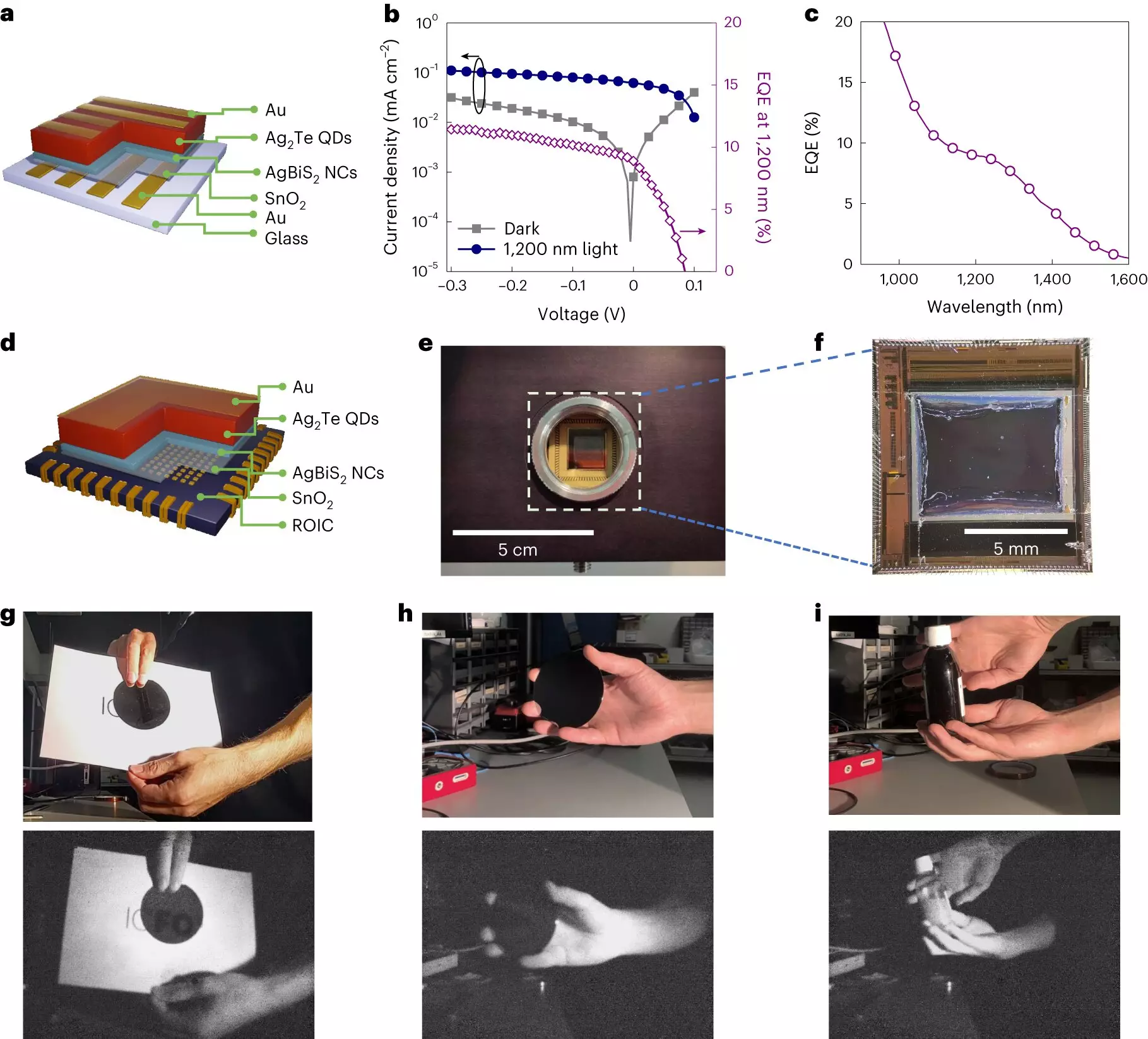The development of shortwave infrared (SWIR) technology has paved the way for revolutionary advancements in computer vision. By harnessing the power of SWIR light, high-volume applications in service robotics, automotive, and consumer electronics markets can achieve unprecedented reliability, function, and performance. Image sensors with SWIR sensitivity offer enhanced operation under adverse conditions such as bright sunlight, fog, haze, and smoke. Additionally, SWIR enables eye-safe illumination sources and the detection of material properties through molecular imaging. While previous SWIR image sensor technologies have relied on heavy metals like lead or mercury, a team of researchers led by ICFO proposes a breakthrough solution using non-toxic colloidal quantum dots (CQDs).
Despite the promising potential of SWIR-sensitive quantum dots, their adoption in mass-market applications has been hindered by the presence of heavy metals. These materials, such as lead or mercury (IV-VI Pb, Hg-chalcogenide semiconductors), are subject to strict regulations by the Restriction of Hazardous Substances (RoHS) directive in Europe. To address this roadblock, the ICFO researchers sought to develop SWIR image sensor technology using non-toxic colloidal quantum dots.
During their investigation into synthesizing silver bismuth telluride (AgBiTe2) nanocrystals, the researchers stumbled upon silver telluride (Ag2Te) as a by-product. This material displayed strong and tunable quantum-confined absorption, similar to quantum dots. Recognizing its potential for SWIR photodetectors and image sensors, the team pivoted their efforts to synthesize phosphine-free versions of silver telluride quantum dots. By using different phosphine-free complexes, the researchers achieved quantum dots with well-controlled size distribution and excitonic peaks across a broad range of the spectrum.
After synthesizing the phosphine-free quantum dots, the researchers fabricated a laboratory-scale photodetector to characterize the devices and measure their properties. The initial photodiode exhibited low performance in sensing SWIR light, prompting the incorporation of a buffer layer to enhance its performance significantly. The redesigned SWIR photodiode showcased a spectral range from 350nm to 1,600nm, a linear dynamic range exceeding 118 dB, a -3dB bandwidth surpassing 110 kHz, and a room temperature detectivity of the order 1012 Jones. These figures of merit were comparable to photodiodes relying on heavy-metal-containing counterparts.
Building on the success of the non-toxic quantum dot-based photodetector, the researchers collaborated with Qurv, an ICFO spin-off, to develop a SWIR image sensor as a proof-of-concept. By integrating the new photodiode with a CMOS-based focal plane array (FPA), the team demonstrated a non-toxic, room temperature-operating SWIR quantum dot-based image sensor. The image sensor exhibited impressive capabilities, including the ability to visualize the transmission of silicon wafers under SWIR light and detect the content of opaque plastic bottles that were not visible in the visible light range.
Accessing the SWIR range with low-cost technology has the potential to revolutionize various domains, including improved vision systems for the automotive industry, enabling vision and driving under adverse weather conditions. The SWIR band’s eye-safe window around 1.35-1.40 μm offers the opportunity for long-range light detection and ranging (LiDAR), three-dimensional imaging for automotive, augmented reality, and virtual reality applications. Moving forward, the researchers aim to enhance the performance of photodiodes by engineering the stack of layers in the photodetector device. They also plan to explore new surface chemistries for the Ag2Te quantum dots, aiming to improve the material’s overall performance, thermal stability, and environmental stability as it progresses towards mass-market adoption.
The development of non-toxic SWIR colloidal quantum dots holds immense potential for revolutionizing computer vision applications. By eliminating heavy metals from the quantum dot technology, researchers have taken a significant step towards mass-market adoption. The breakthrough in synthesizing phosphine-free silver telluride quantum dots and their successful integration into photodetectors and image sensors is a testament to the team’s dedication and innovation. With the continued development and optimization of this technology, we can expect to see SWIR-enabled devices that offer unprecedented reliability, function, and performance in various industries, transforming the way we interact with and perceive the world around us.


Leave a Reply